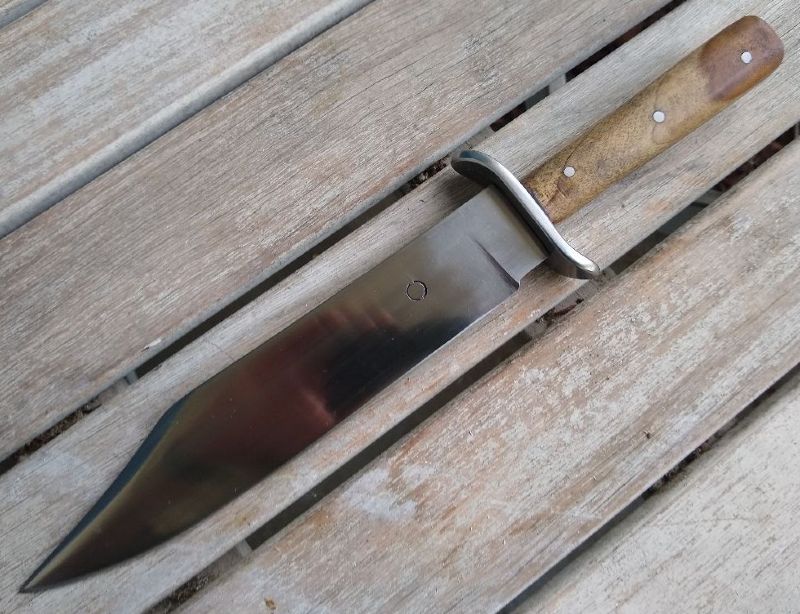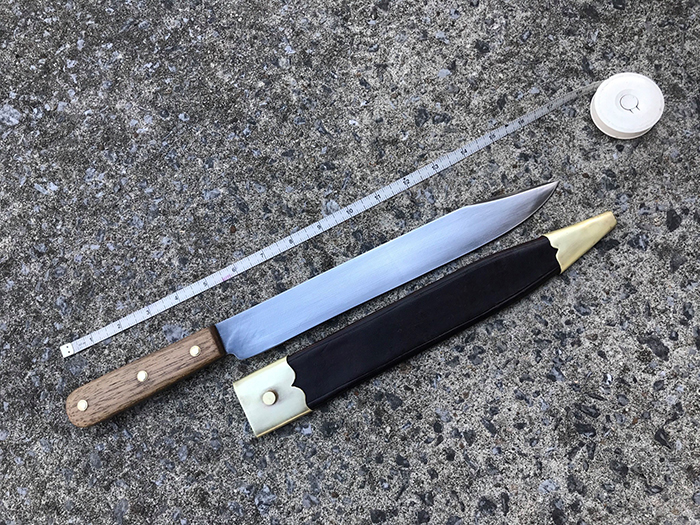I've ordered a couple of unmounted Sheffield-style bowie blades, the kind with straight-edged slab tangs, similar to the attached image. I'm wondering how to make sure the hilts have a secure grip, given that they have straight edges and no widening at the butt end. Was the reason they were often given antler scales so the textured surface would make them grippier? If I use smooth wood grips, should I regrind the tang edges so that they flare at the end? Or am I worrying about nothing?
[ Download ]


